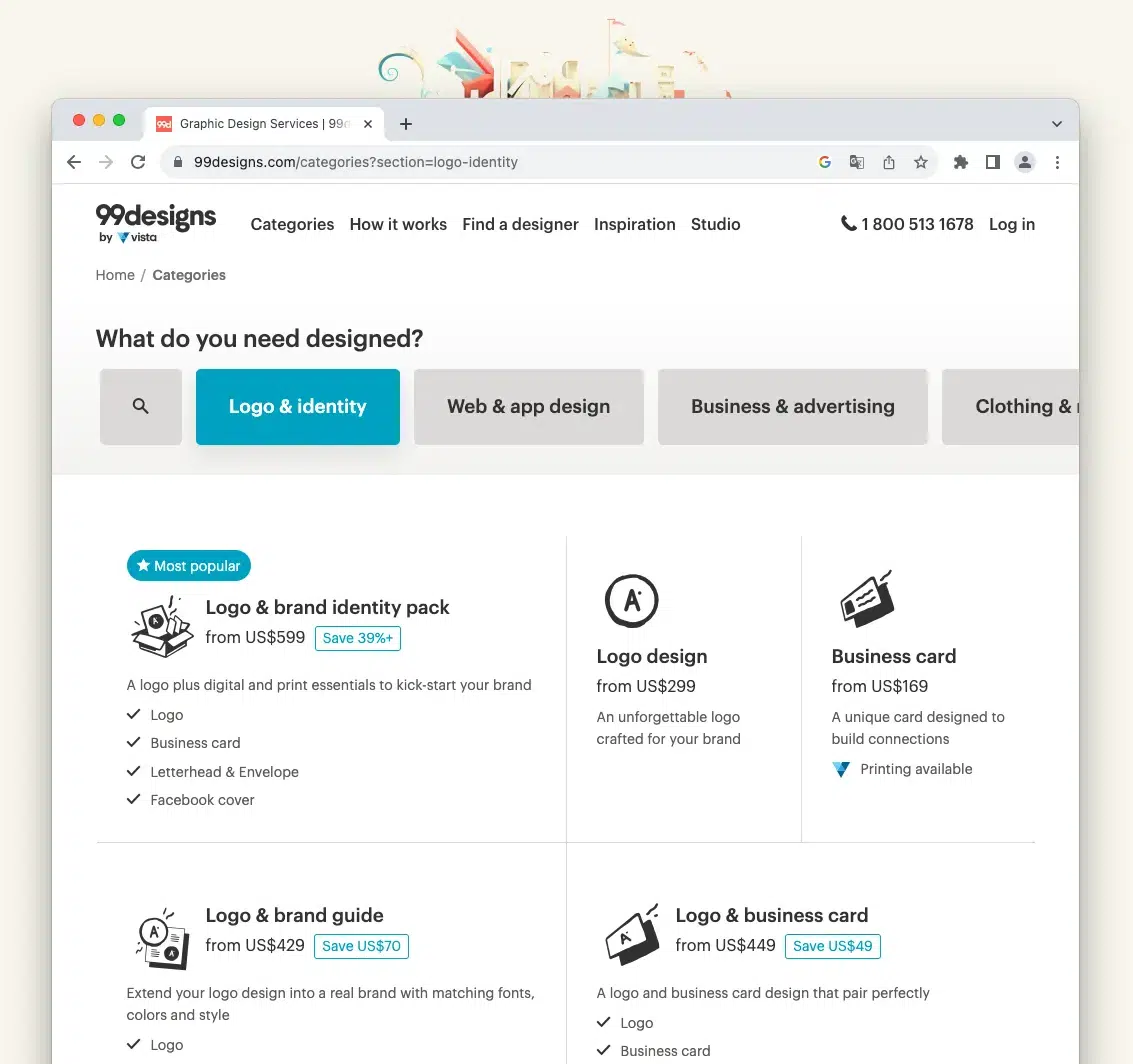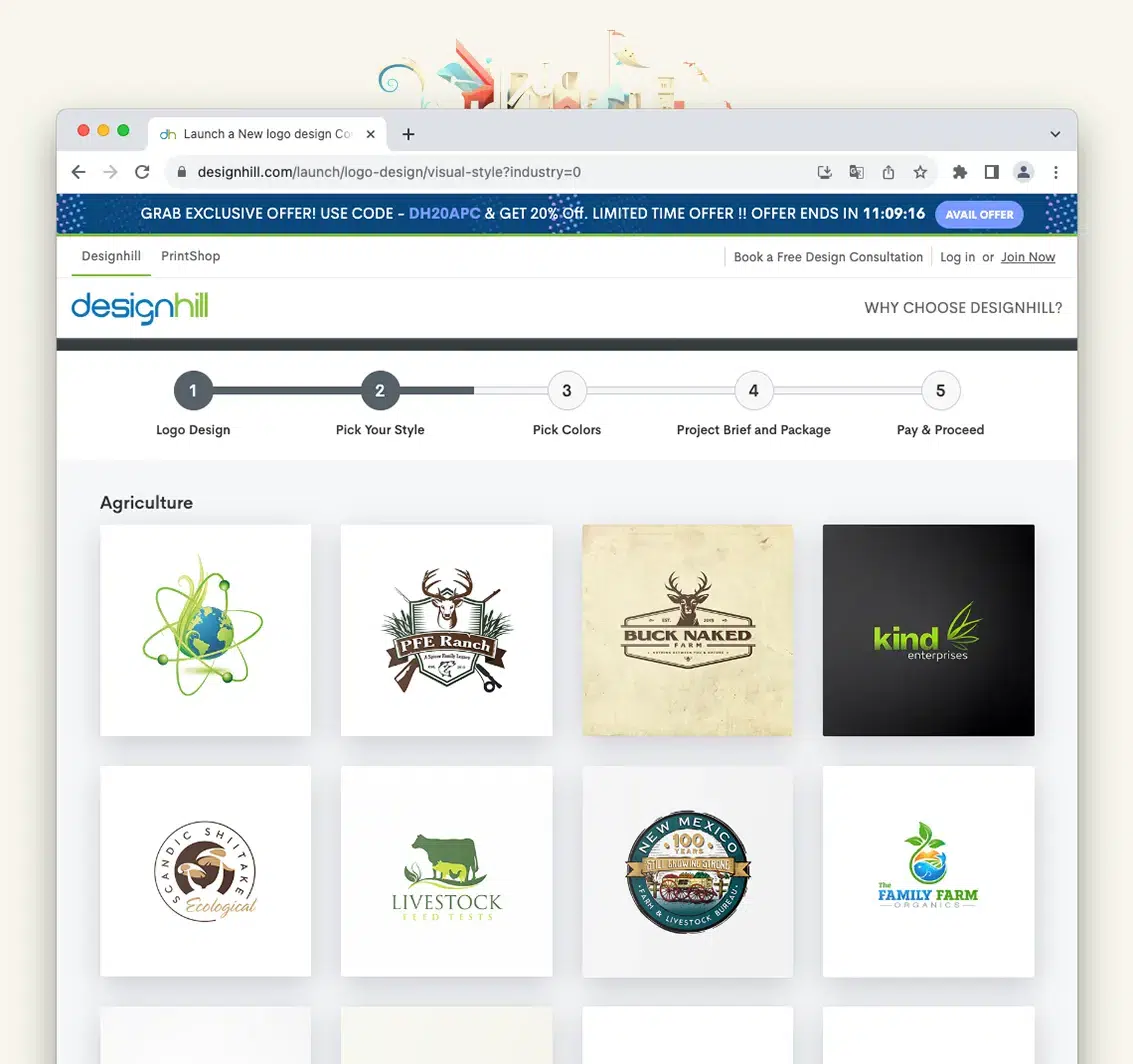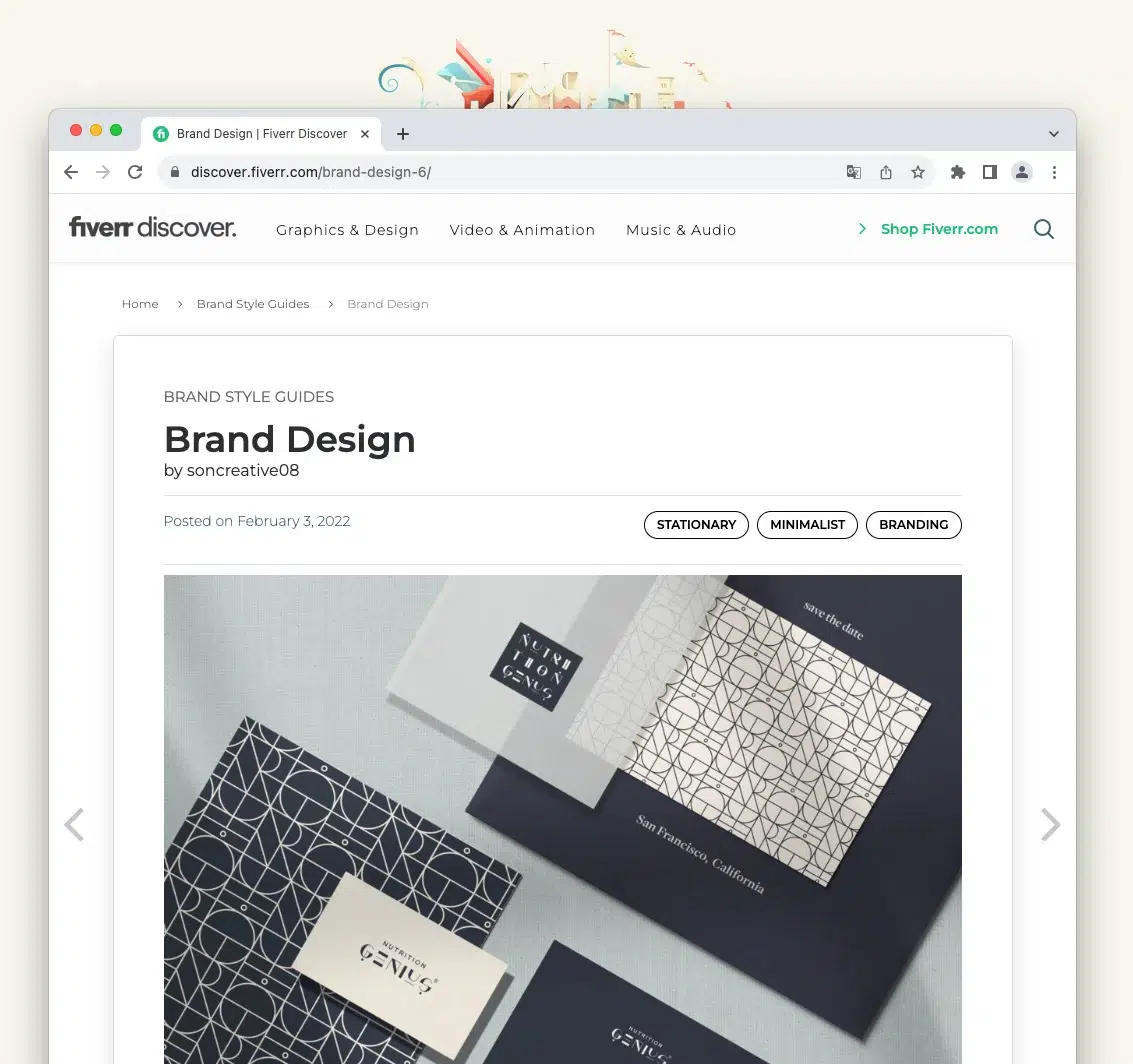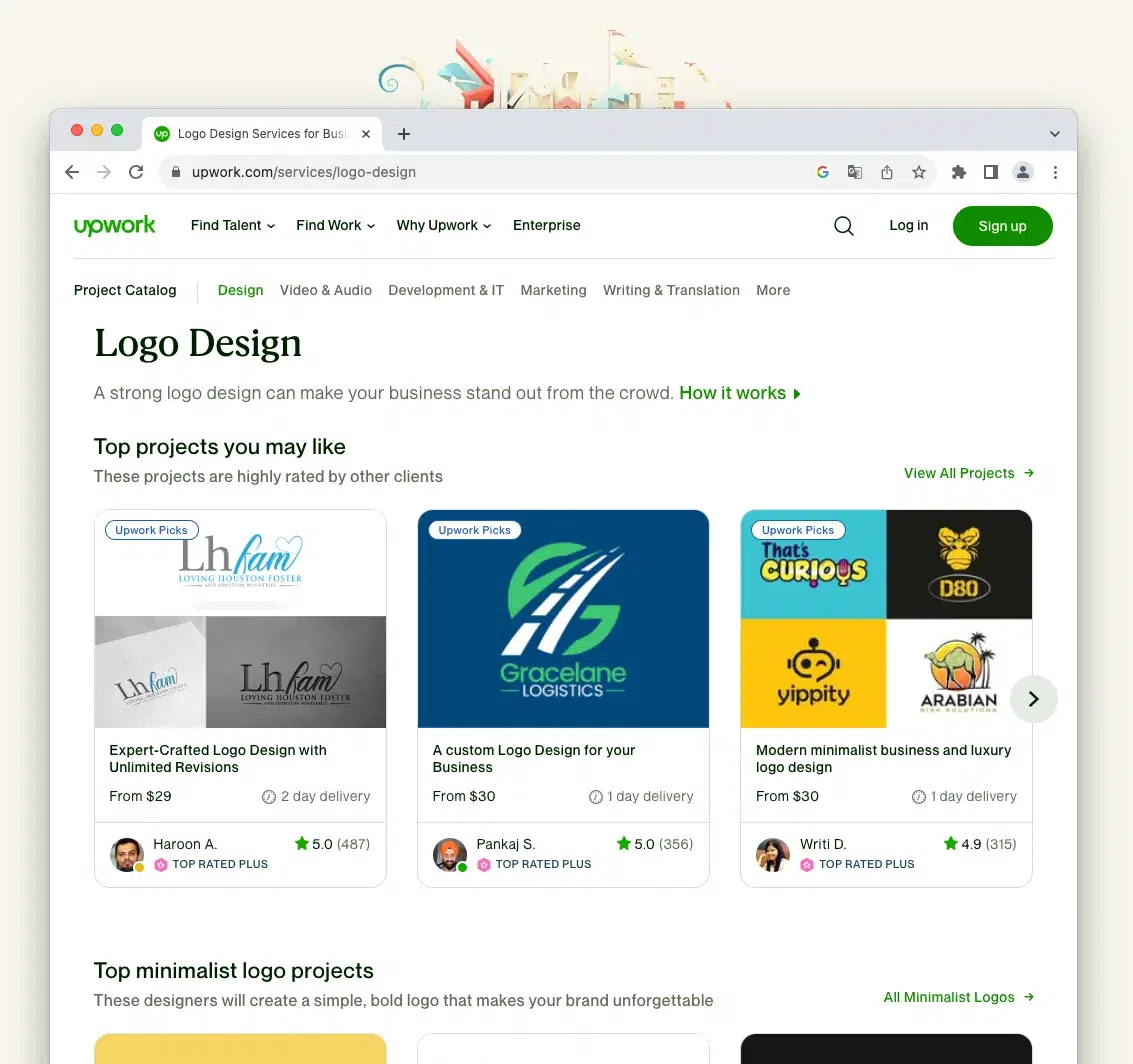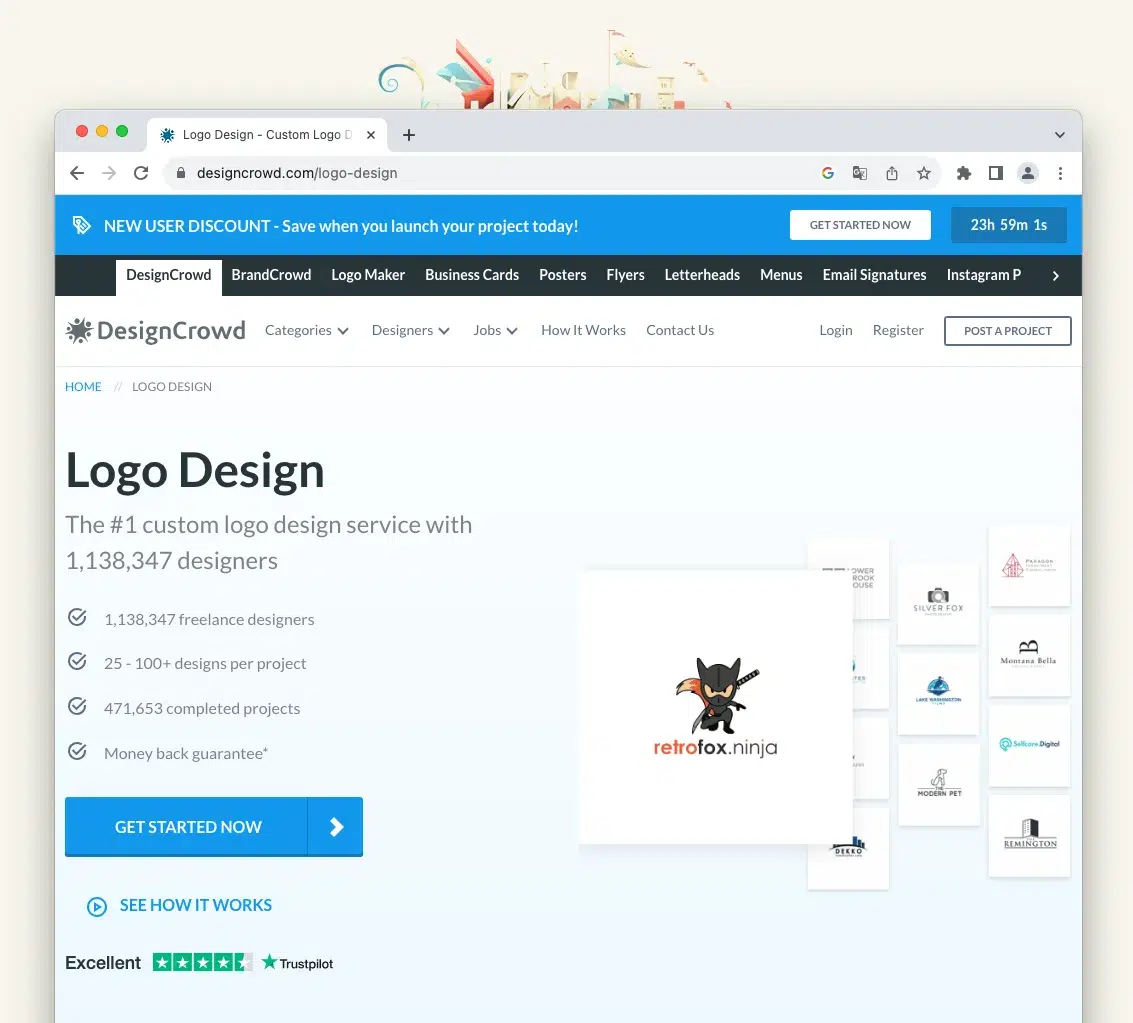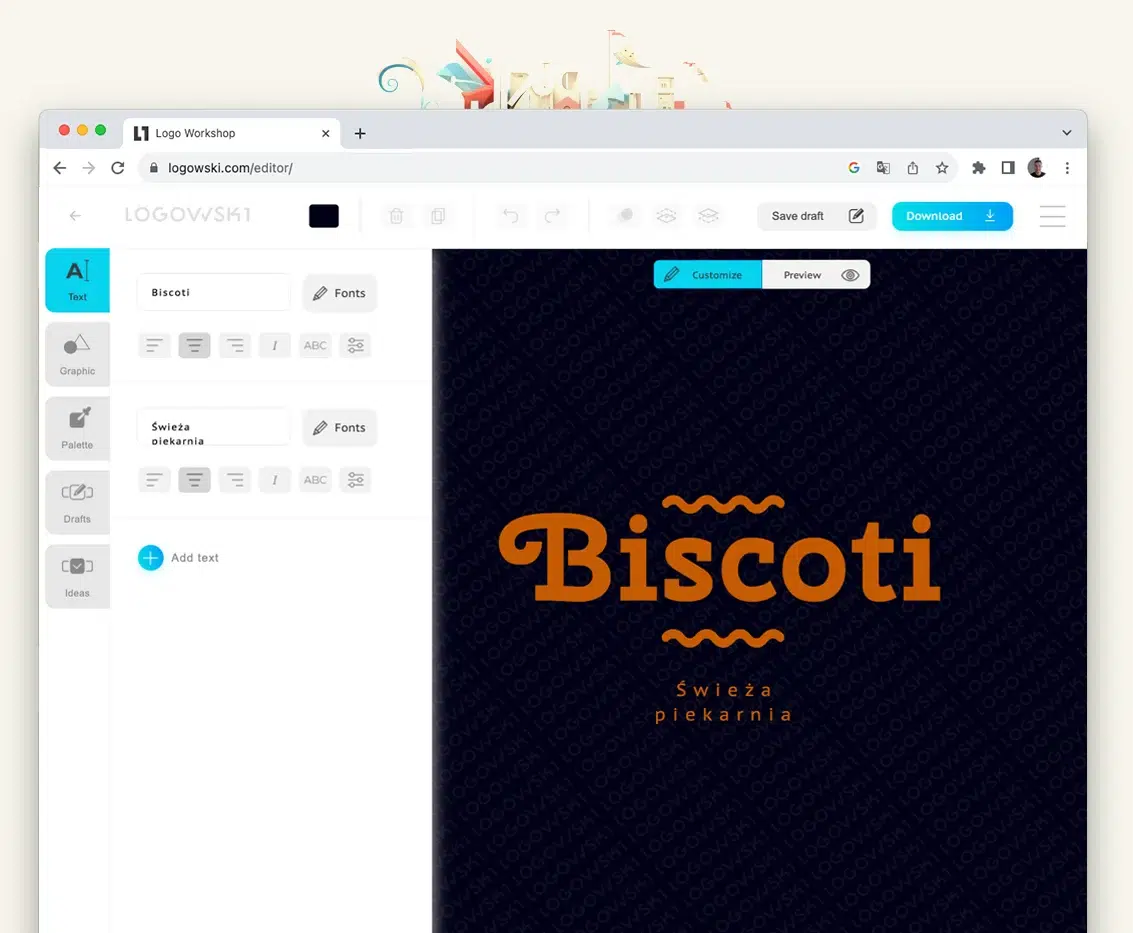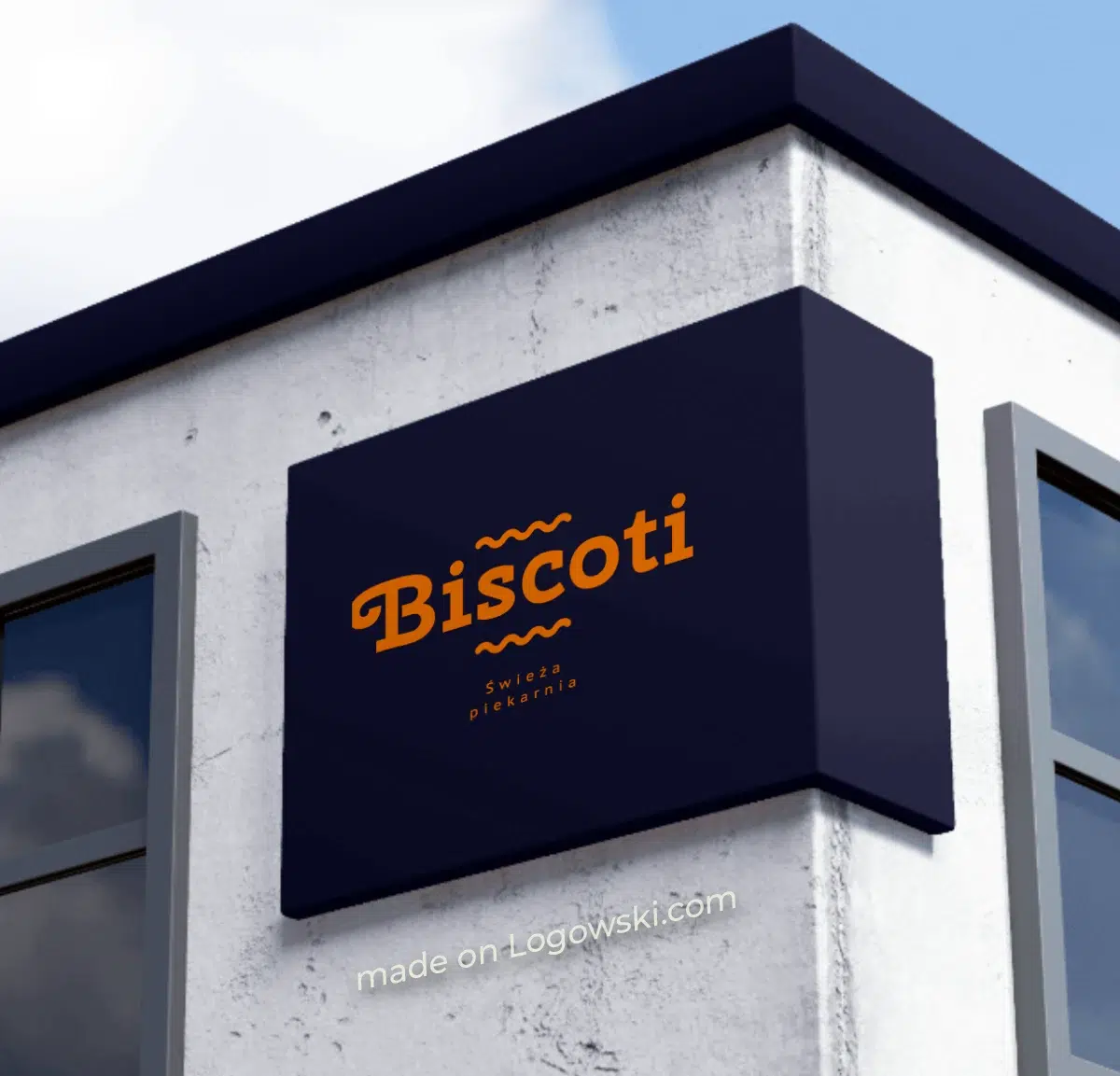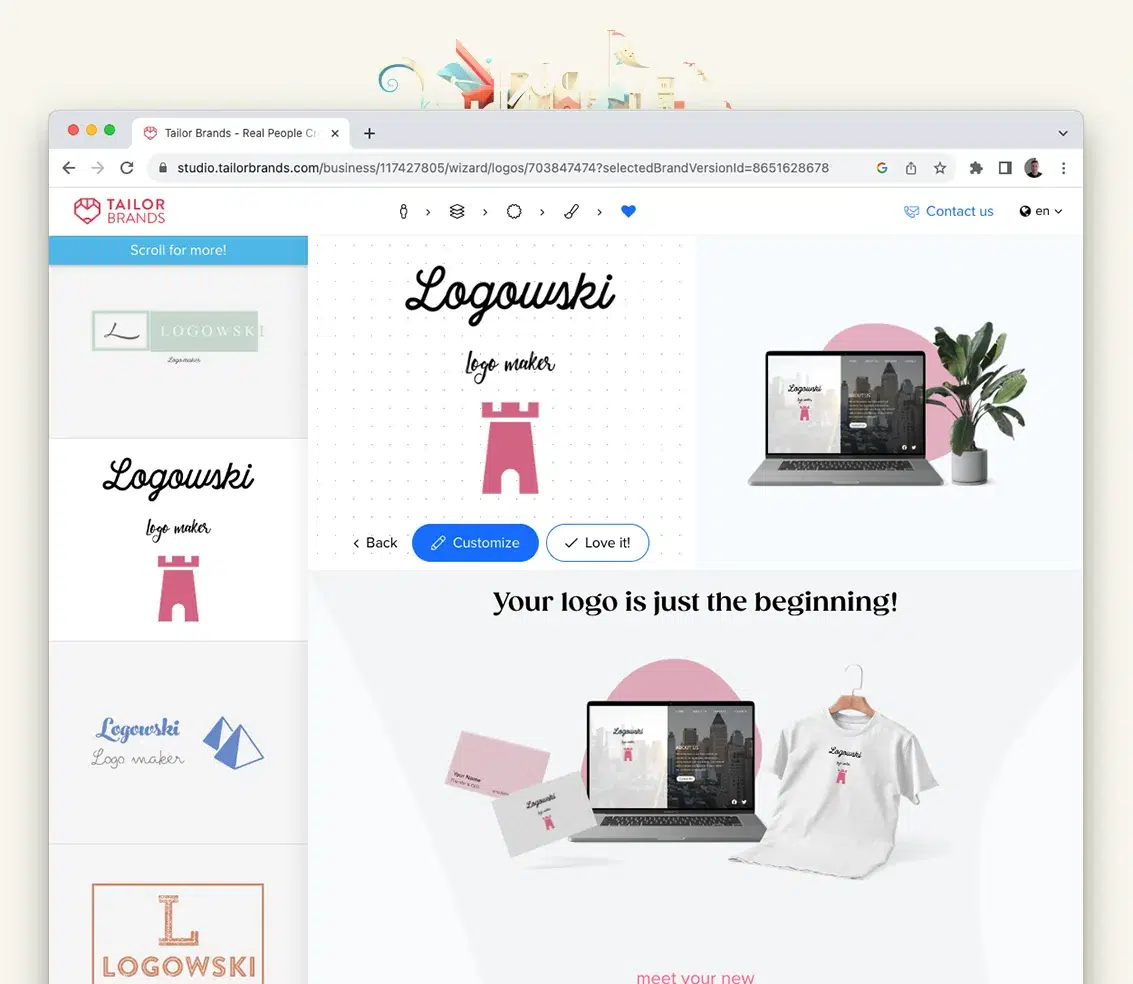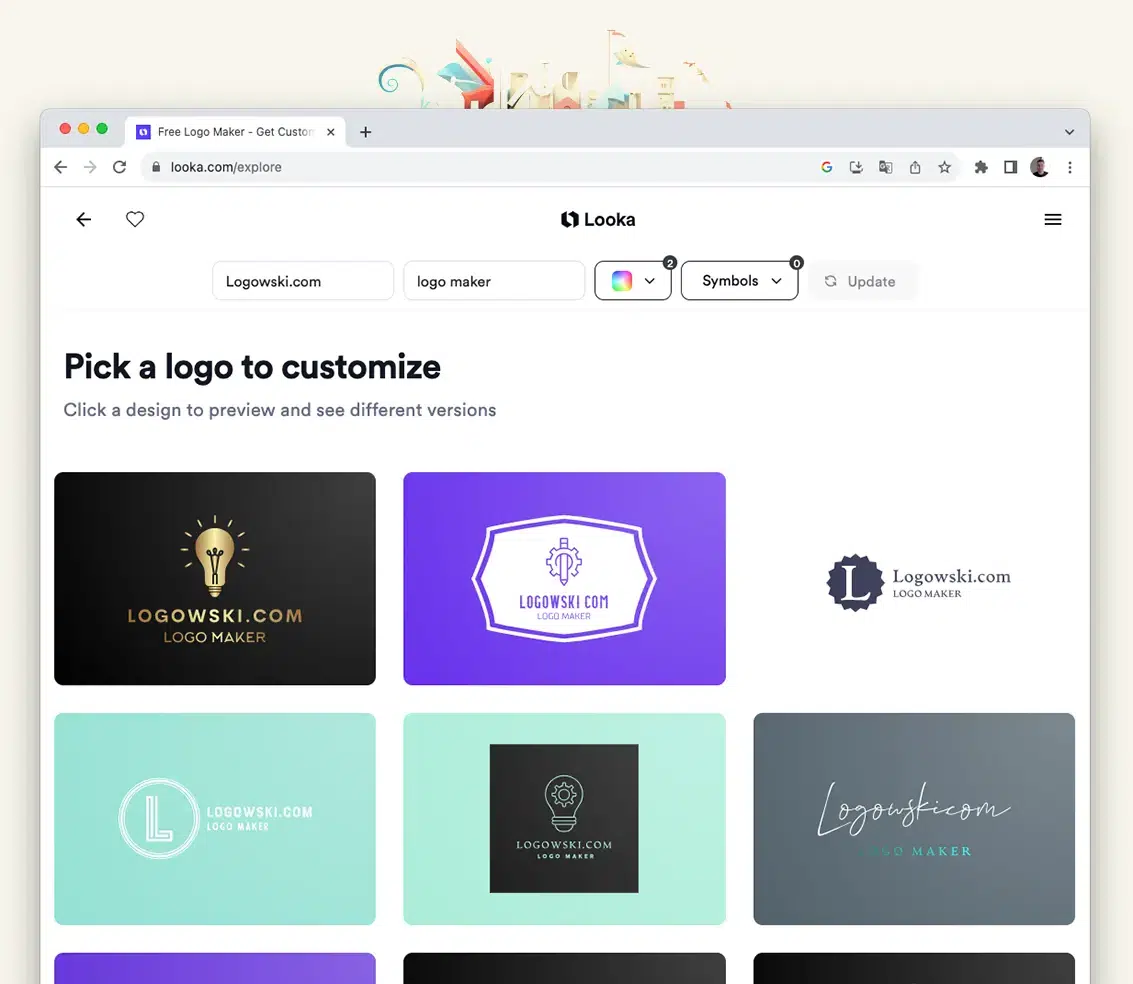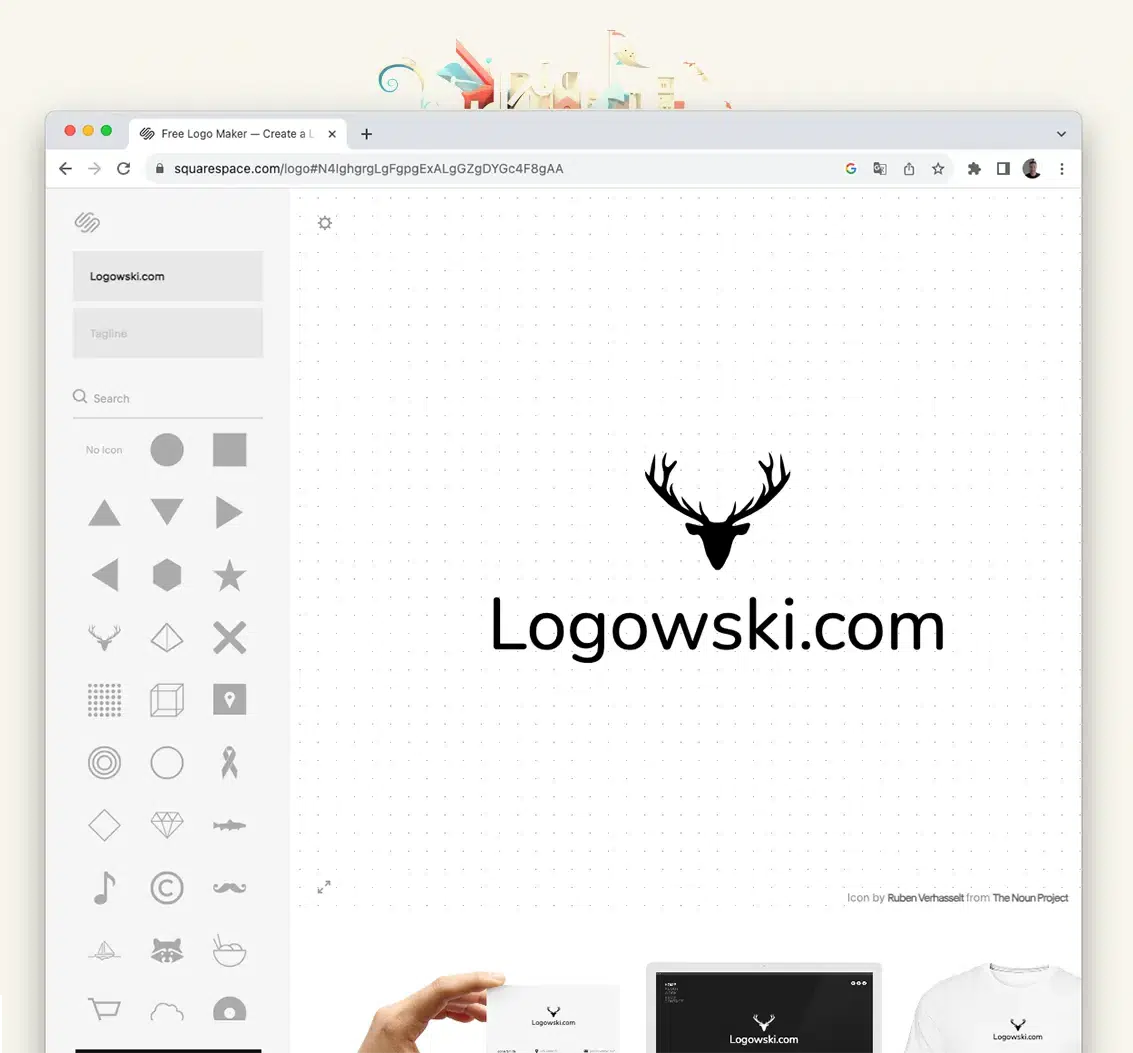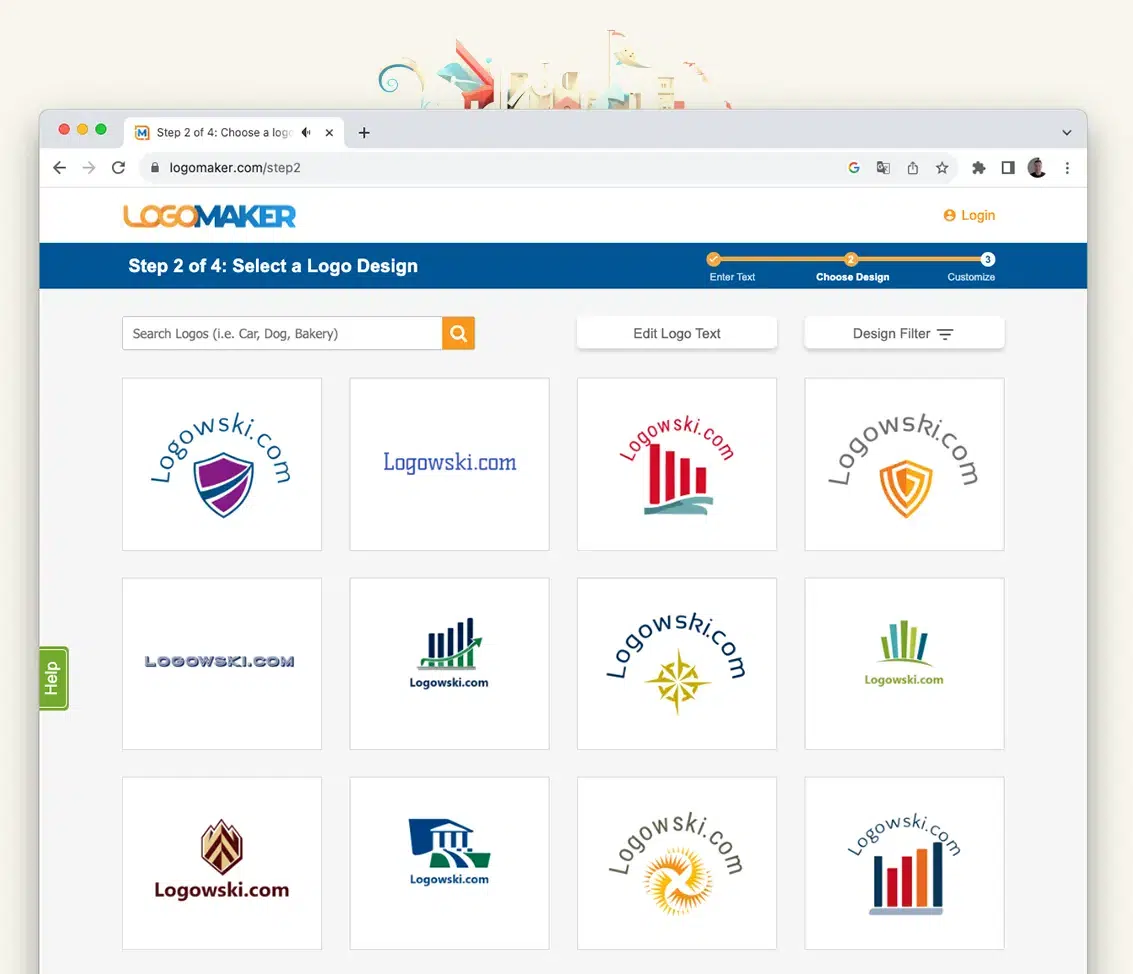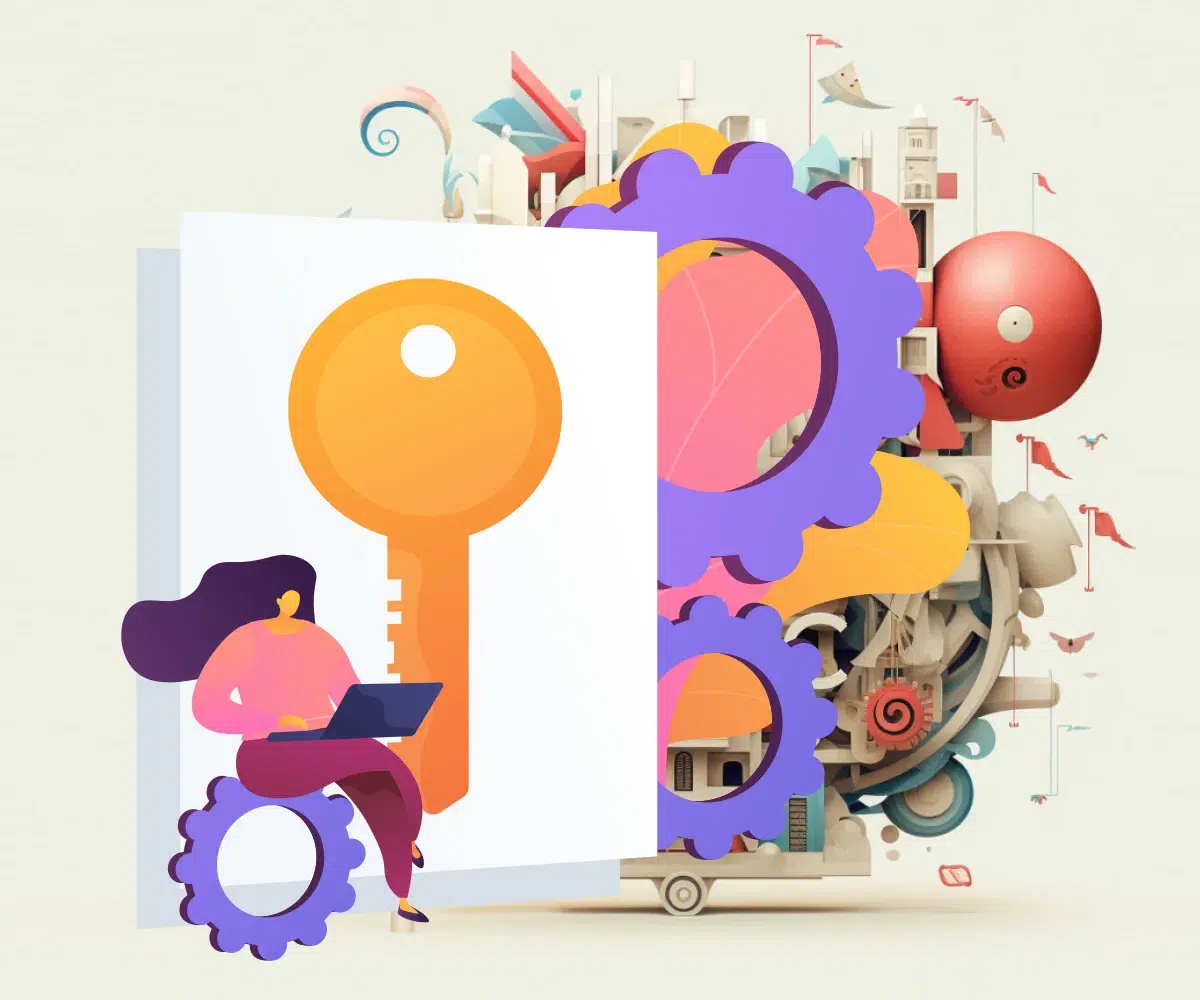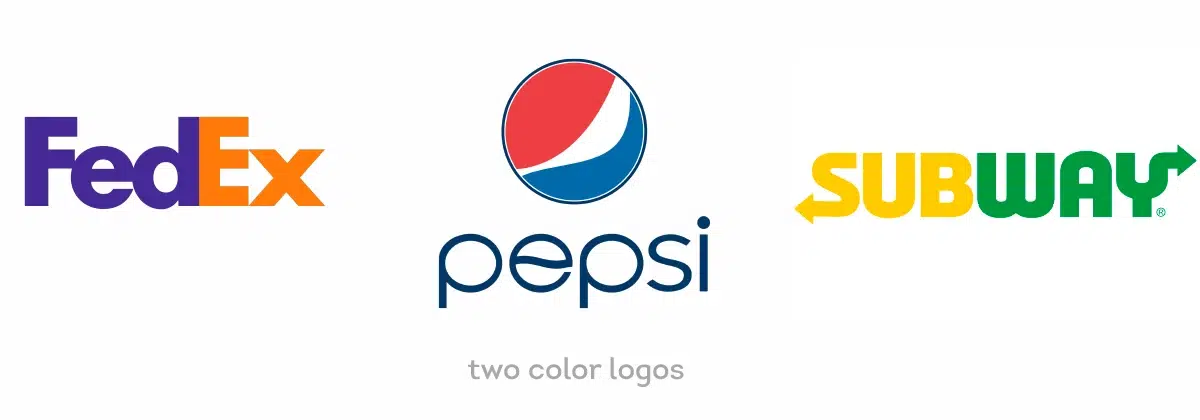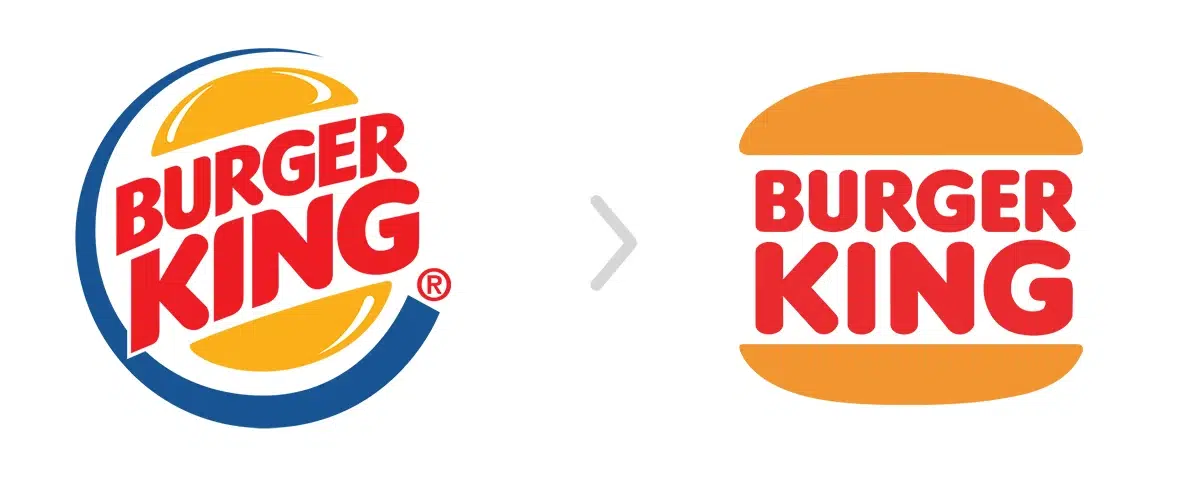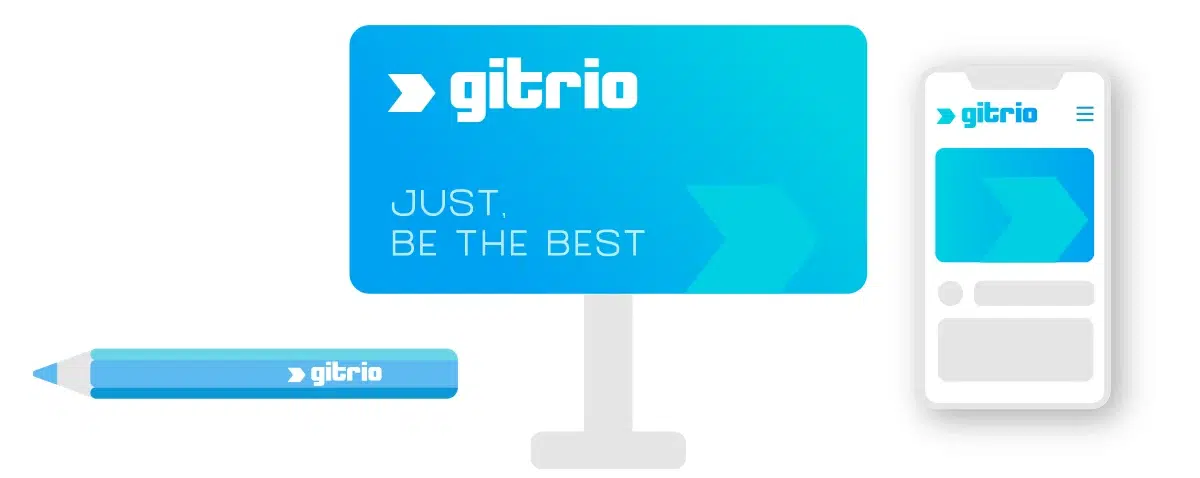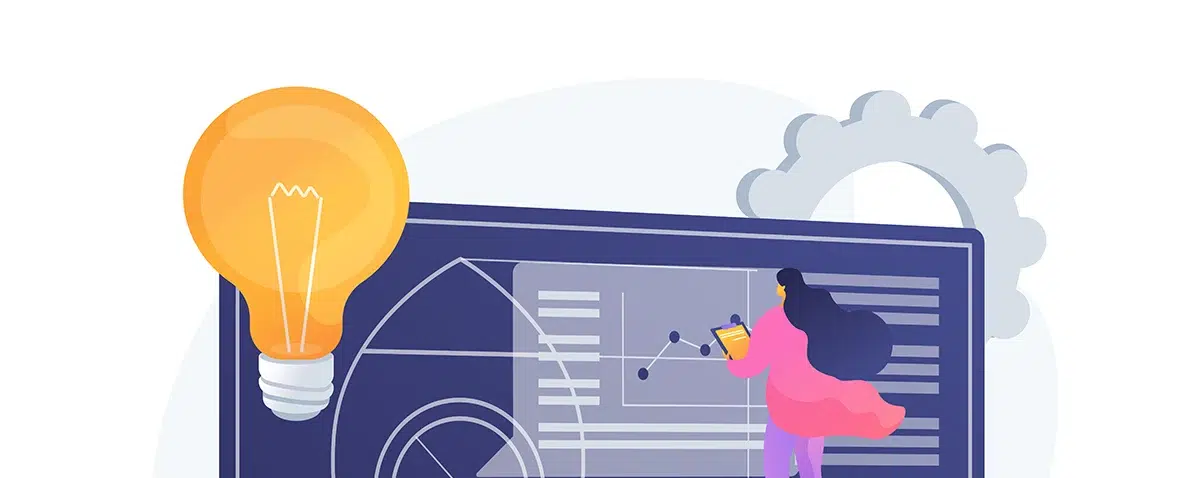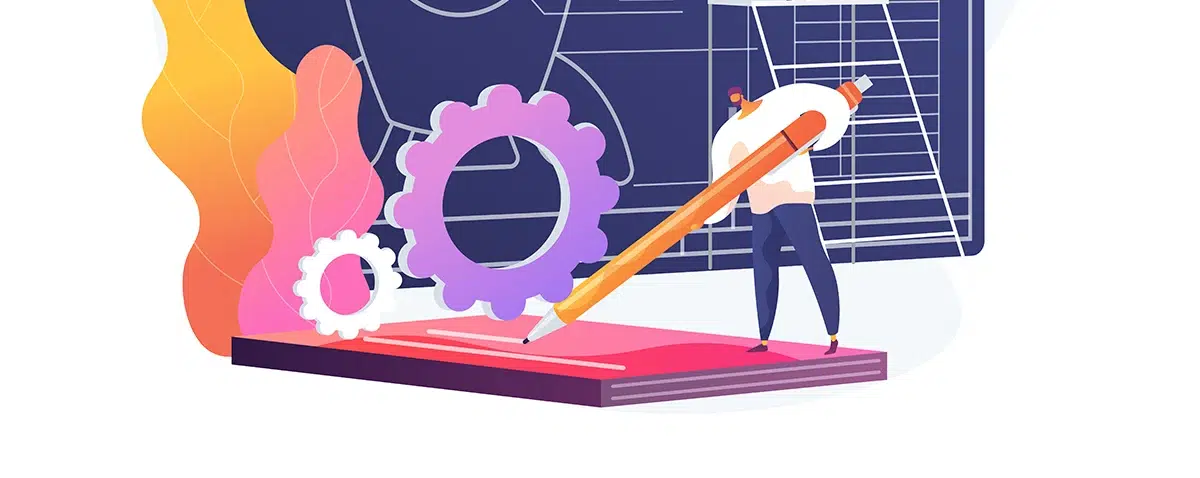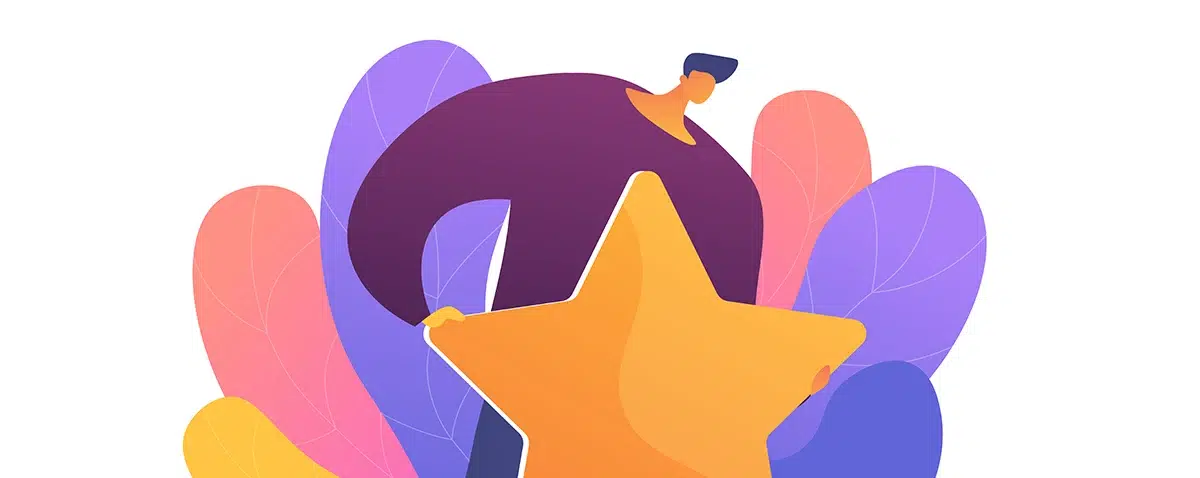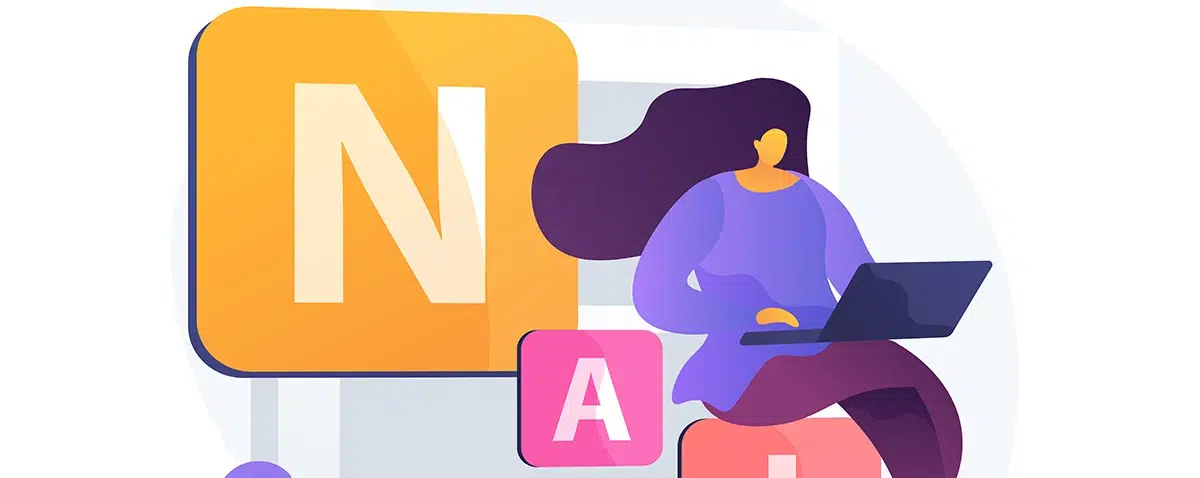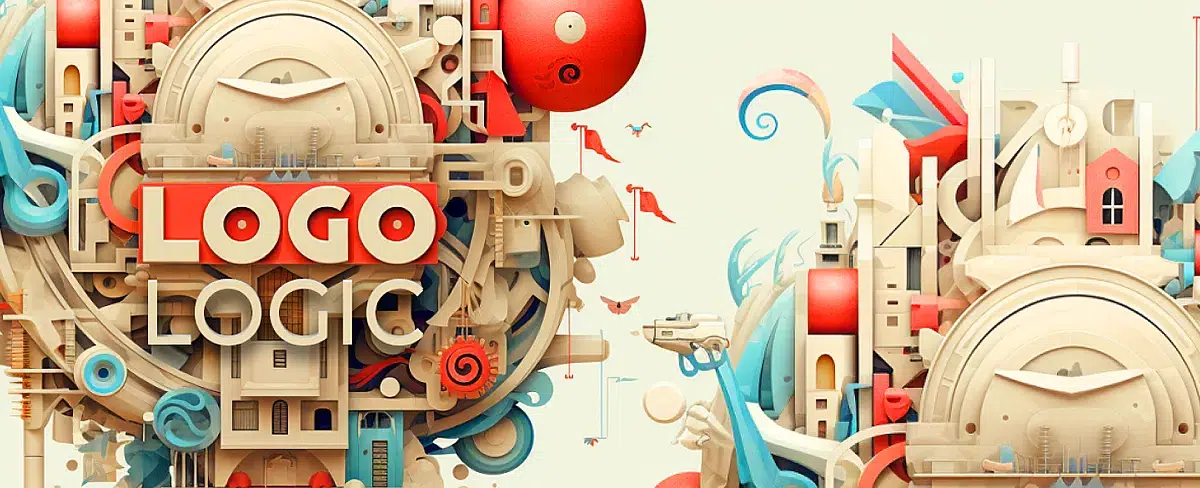
Article Menu:
- Logo Design Services Compared
- Key Factors in Choosing a Logo Design Service
- DIY vs. Hiring a Designer: Which is Right For You?
- Questions to Ask Potential Logo Designers
- 8 Tips for Creating a Strong Visual Brand Identity
- Are Two Color Logos Better Than Single Color?
- Should You Hire a Freelancer or Design Agency for Logo Design?
- 5 Must-Have Elements in a Professional Logo Design
- Logo Design Process Step-By-Step
- How Much Should a Logo Design Cost? Factors to Consider
- 7 Mistakes to Avoid When Designing Your Logo
- Key Questions to Ask Yourself When Designing a Logo
- Why Invest in a Professional Logo Design
- Logo Design Trends to Avoid
- Choosing the Right Logo Design for Long-Term Success
Creating a logo that represents your brand and connects with your target audience is crucial for any business. But with so many logo design services out there, how do you choose the right one? This article will compare the key players in logo logic to help you make the best decision for your brand.
Logo Design Services Compared
Here is an overview of the top logo design services and their key features:
99designs
99designs is a logo design crowdsourcing platform where designers compete to create the best logo for you.
Pros:
- Access to lots of design talent and ideas
- Good value for money
- Fast turnaround time
Cons:
- Less personalized service
- Can't directly communicate with designers
- Quality control can be hit or miss
Designhill
Designhill uses AI and algorithms to match you with a designer, then facilitates collaboration to finalize the logo.
Pros:
- Good balance of tech and human touch
- Lower cost than traditional agencies
- Designers screened for quality
Cons:
- Less hand holding than a traditional agency
- More logos to sift through
Fiverr
Fiverr profiles a range of freelance logo designers you can browse and connect with directly.
Pros:
- Huge selection of designers
- Low cost options available
- Fast turnaround time
Cons:
- Varying levels of quality
- Need to vet designers yourself
- Less guidance on design strategy
Upwork
Upwork is a freelance network with a range of logo designers available for hire.
Pros:
- Established professionals on site
- Flexible hiring options
- Custom proposals for your project
Cons:
- Can be time consuming to sort through options
- Premium pricing for top talent
- More logistics to manage yourself
Logojoy
Oh, wow. Update! The website is no longer available, it now redirects to looka.com.
DesignCrowd
DesignCrowd facilitates logo design contests where designers submit concepts and you pick the winner.
Pros:
- Access to lots of ideas
- Good value for budget conscious
- Option to provide feedback
Cons:
- Less personalized service
- Varying design quality
- Time spent reviewing concepts
Logowski Logo Maker
Logowski.com is an online logo maker that uses templates and AI to generate logos you can customize.
Pros:
- Easy to use logo builder
- Free plan
- A complete package of files necessary for printing and web
- Lower cost
- No designer required
Cons:
- Limited design options
- Sometimes it infuriates
Tailor Brands
Tailor Brands uses AI to generate a customized logo you can edit yourself in their platform.
Pros:
- Easy to use DIY platform
- Lower cost logo builder
- Quick turnaround
Cons:
- Limited design personalization
- No human designer involvement
- AI has creative limitations
Looka
Looka is a DIY online logo maker with AI assistance and stock icons/fonts for creating logos.
Pros:
- Simple guided process
- Budget friendly DIY approach
- Large icon/font library
Cons:
- Limited design options
- No human designer input
- Generic look and feel
Squarespace Logo
Squarespace Logo is a built-in logo maker for the Squarespace website builder.
Pros:
- Seamlessly integrates with Squarespace
- Very easy to use
- Decent templates to start
Cons:
- Limited design options
- No human designer involvement
- Cookie cutter logos
LogoMaker
LogoMaker is an automated logo generator with customization options.
Pros:
- Fully automated process
- Easy to use platform
- Low cost
Cons:
- No human design input
- Limited creativity
- Generic logos
Key Factors in Choosing a Logo Design Service
With so many options for creating a logo, here are the key factors to consider when deciding which service is best for your brand:
Level of Customization
The level of design customization ranges from completely templated DIY logos to fully hand crafted custom logos. Consider how unique you want your logo to be.
Human vs. AI Design
Some services rely fully on AI while others utilize human designers. AI has limitations, so if you want a more creative logo, choose human design.
Cost
Pricing varies greatly based on level of design complexity and customization. DIY templated logos are cheapest while custom agency logos cost much more.
Turnaround Time
Turnaround ranges from instant DIY logos to weeks for designer crowdsourcing and agency work. Consider your timeline.
Designer Communication
Some services have direct communication with designers while others have little to none. Factor in how involved you want to be.
Quality Control
Quality varies greatly. DIY platforms offer limited quality control while design agencies actively manage it. Vet designer skill if quality is paramount.
Brand Strategy
Services range from zero brand strategy to in-depth branding guidance from experts. If you want strategy advice, choose services with branding focus.
By weighing these key factors, you can determine which logo design service matches your budget, brand needs, and goals.
DIY vs. Hiring a Designer: Which is Right For You?
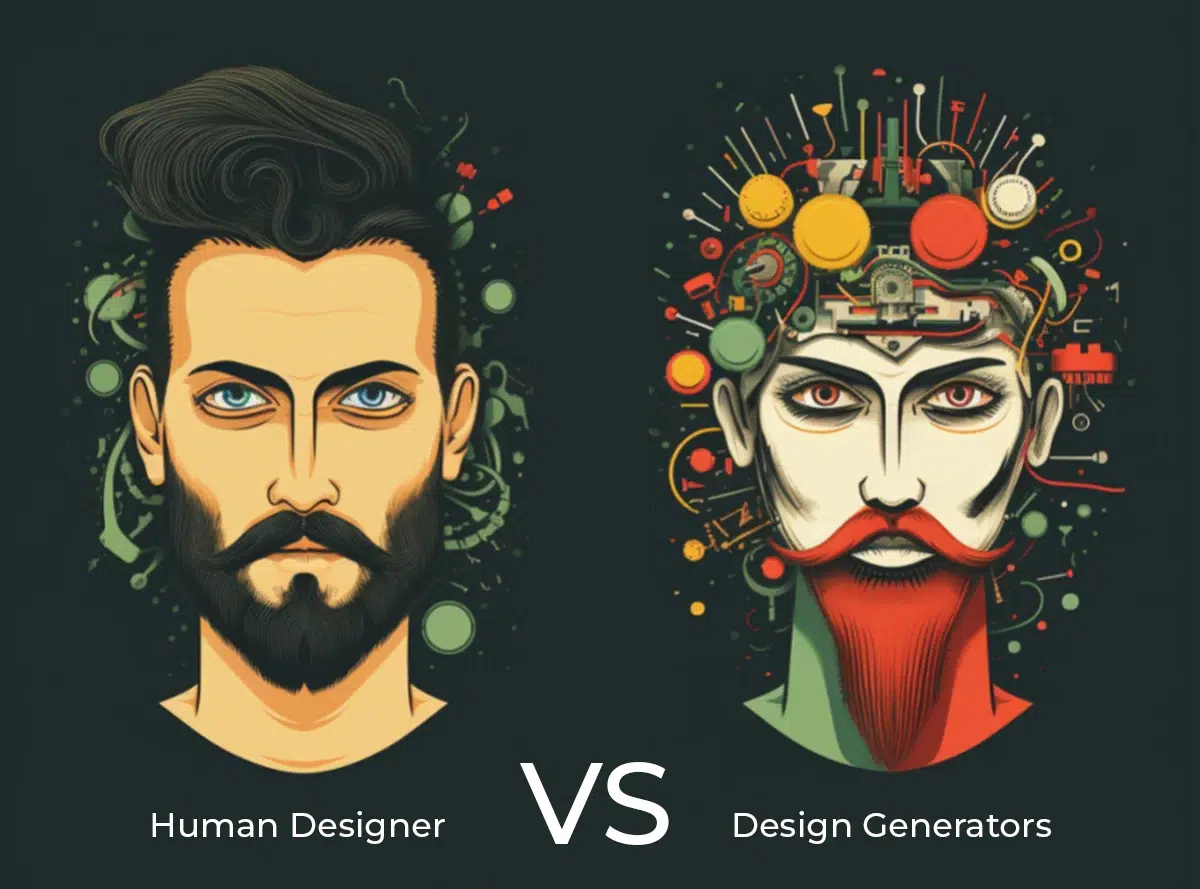
A key decision is whether to go the DIY logo maker route or hire a professional designer. Here's an overview of the pros and cons:
![]()
DIY Logo Makers
Pros:
- Very affordable - often $20-$50
- Quick turnaround time
- Easy for non-designers
Cons:
- Lack of customization
- No human creativity
- Generic, cookie-cutter look
![]()
Hiring a Designer
Pros:
- Custom creation process
- Human creativity and strategy
- More unique, original result
Cons:
- More expensive - $200+ or more
- Longer timeline
- Less control over final design
For many startups and cost-conscious businesses, a DIY logo may be the best fit. But if you want a one-of-a-kind logo that represents your brand essence, hiring a professional designer is worth the investment.
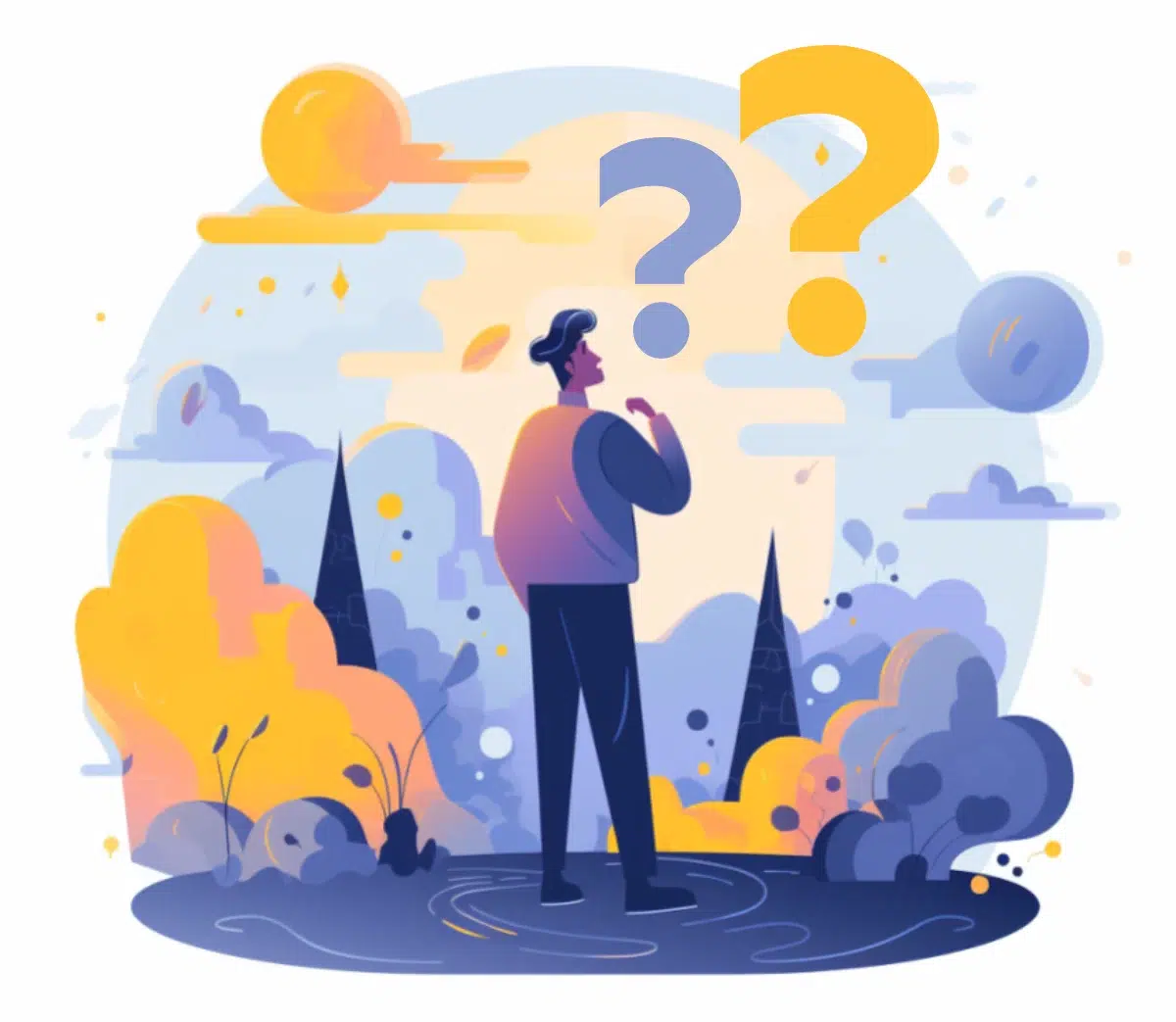
Questions to Ask Potential Logo Designers
If you decide to hire a logo designer, here are some key questions to ask before signing an agreement:
- What is your design process?
- How will you get to know my brand during the process?
- How many rounds of revisions are included?
- How long have you been designing logos?
- Could I see some logos you’ve designed for other brands?
- Do you have experience in my industry?
- Do you provide any brand strategy or guidance during the process?
- How long will the timeline be from start to final logo delivery?
- What file formats will the final logo be provided in?
- Who owns the rights to the logo logic?
- What is your pricing structure?
Their responses will help you gauge their experience, customization process, and strategic value to determine if they are the right fit to design your logo.
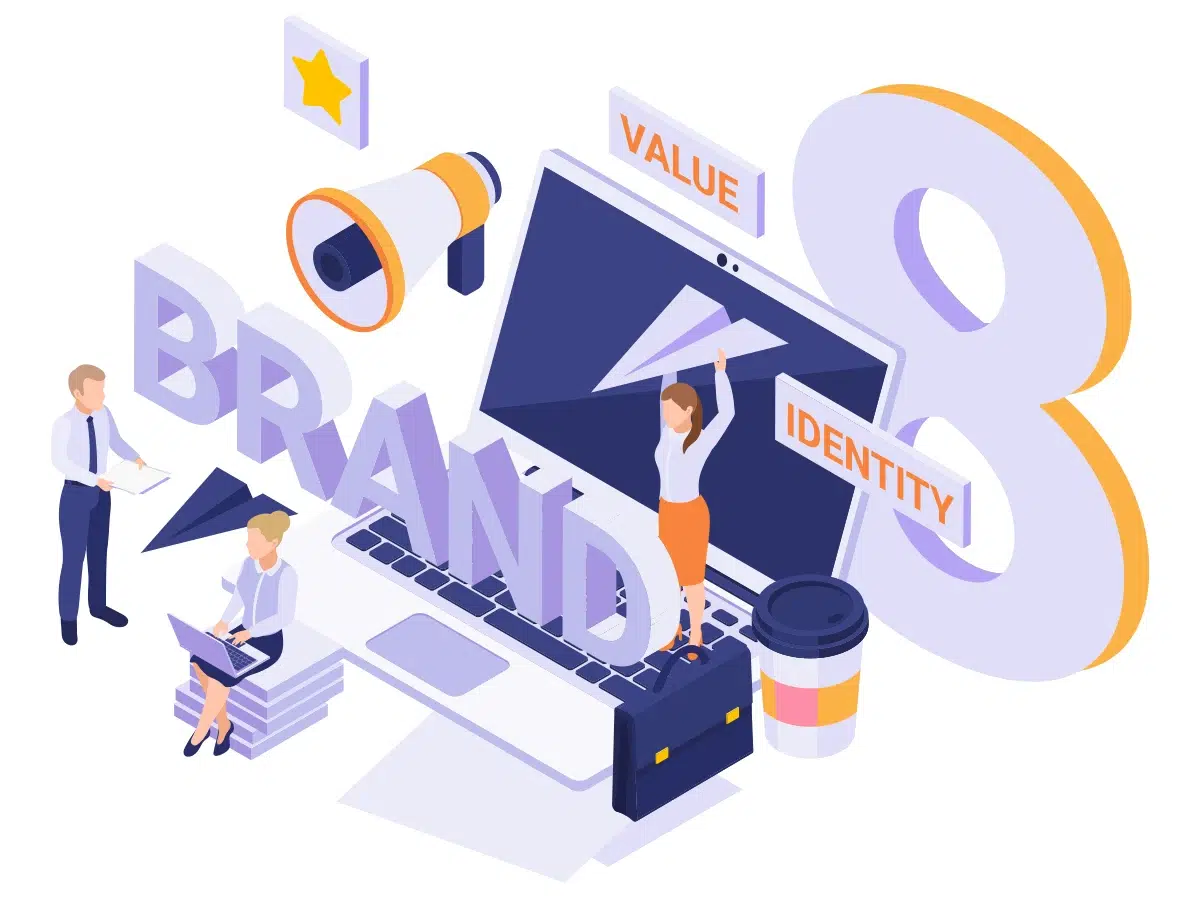
8 Tips for Creating a Strong Visual Brand Identity
Your logo is the cornerstone of your visual brand identity. Here are 8 tips for creating a logo and brand identity that connect with your audience:
1. Know your target audience.
Research your ideal customers so your logo resonates with them.
2. Understand your brand personality.
Define your brand character - is it elegant, edgy, quirky? Let this shine through.
3. Consider the psychology of shapes, colors and fonts.
Circles represent community, blue conveys trust - make intentional choices.
4. Align with your brand mission and values.
Let your logo reflect what your brand stands for.
5. Keep it simple and memorable.
A logo should communicate your brand at a glance in a cluttered digital world.
6. Ensure visual consistency.
Use your logo across platforms and materials to build recognition.
7. Adapt for digital platforms.
Optimized logo variations ensure clarity on websites, apps and social media.
8. Plan for scalability.
Your logo should be effective at any size, in any medium. Test it at small and large scales.
Follow these strategic steps as you embark on creating a logo that builds your brand’s visual identity and forms an emotional connection with your customers.
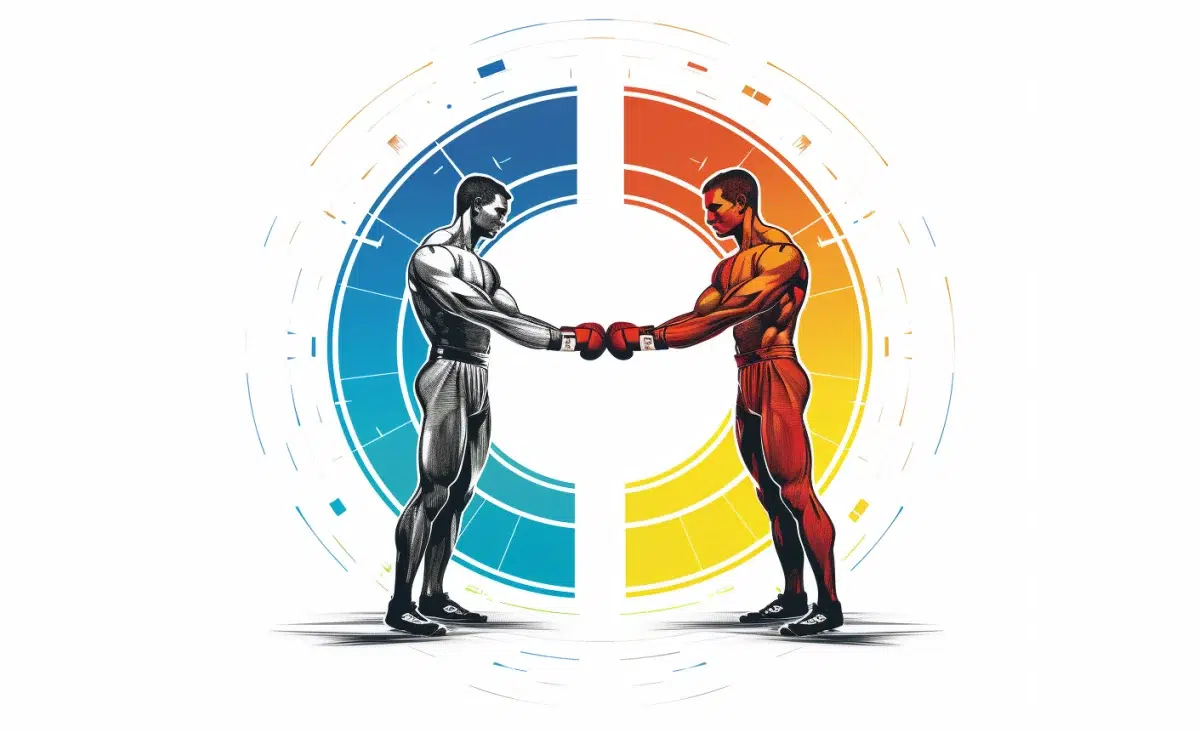
Are Two Color Logos Better Than Single Color?
Should your logo be single color or double color? Here are factors to help you decide:
Benefits of single color logos
- Simplicity - clean and straightforward
- Cost effective - cheaper printing
- Memorable - striking in solid color
- Adaptable - works in any application
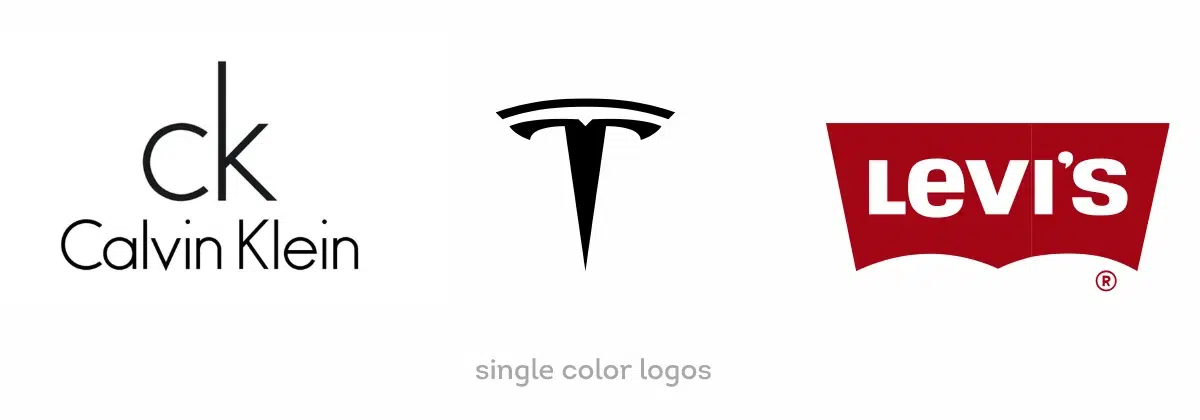
Benefits of two color logos
- Dimension - can portray light/shadow
- Meaning - different colors have symbolism
- Engaging - multiple colors attract eyes
- Unique - stands out from single color logos
Tips for choosing colors
- Limit to 2-3 colors for balance
- Consider color psychology and meaning
- Align with brand personality
- Ensure logo works in black and white
So in most cases, two tastefully blended colors create a more dynamic logo than a single color. But simplicity can be effective when done creatively. Evaluate your brand identity and audience preferences when deciding on colors.
Should You Hire a Freelancer or Design Agency for Logo Design?
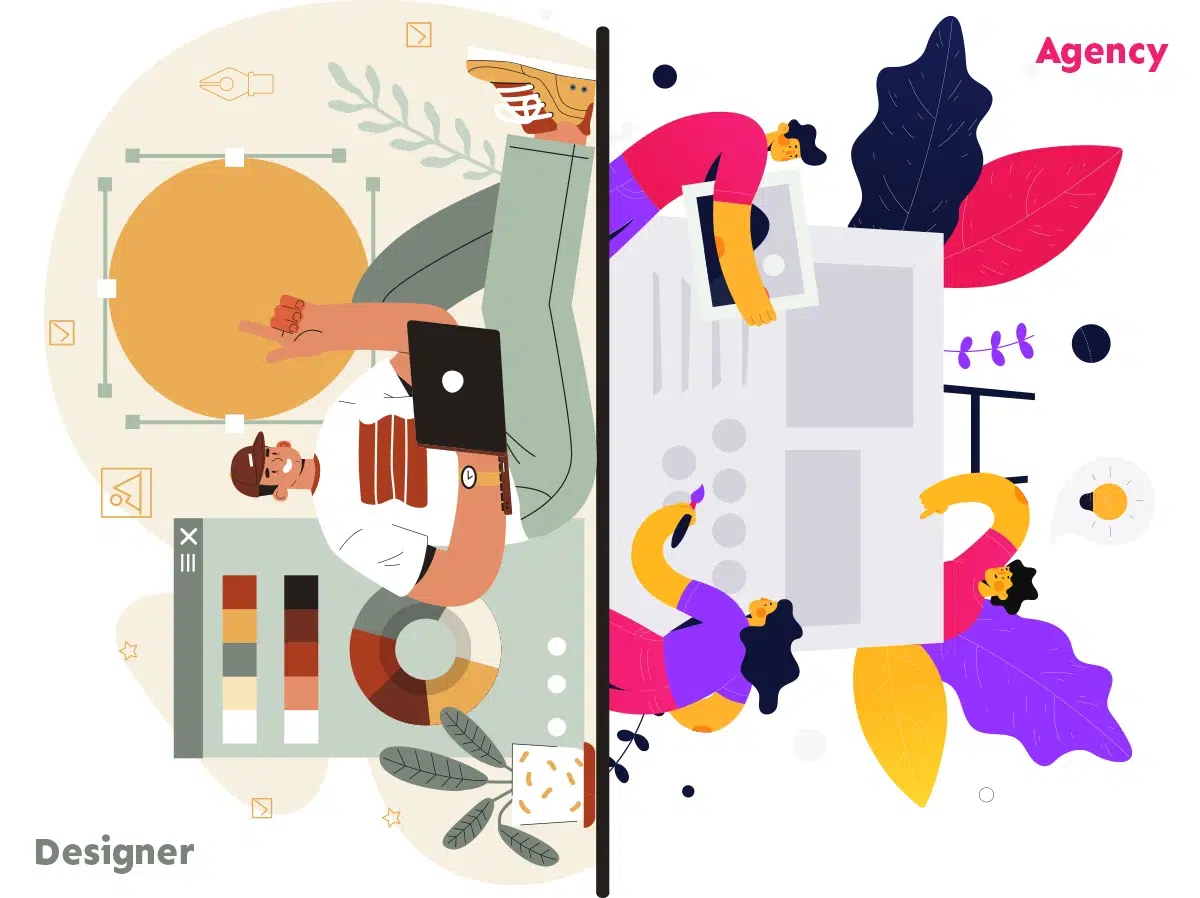
Choosing between a freelance logo designer vs design agency comes down to your budget and needs:
Freelancer Pros
- Lower project cost
- Direct communication
- Focused attention
Freelancer Cons
- Individual design perspective
- Tight timeline capacity
- Limited branding guidance
Agency Pros
- Team strategy approach
- Brand building guidance
- Robust project resources
Agency Cons
- Higher project cost
- Less 1-on-1 time
- Higher minimum budgets
Key Questions
- What level of brand strategy do you need?
- How important is direct designer access?
- What scope of design work is required?
For a small business needing just a logo, a talented freelancer may suffice. But for an enterprise rebrand, an agency’s strategic branding guidance proves more valuable. Assess your budget, brand needs and growth goals before deciding.
5 Must-Have Elements in a Professional Logo Design
Well-executed logo logic require these 5 essential elements:
Simplicity
A logo should be clean, uncomplicated, and convey the brand story at a glance. Simple logos are memorable and effective in any format.
The trend towards simplification can be especially well observed by looking at the redesigns of well-known companies in recent years.
Relevance
Every element in a logo should tie directly back to the brand identity, values and audience. Avoid superfluous decoration.
Memorability
Logos should be visually distinctive and unique enough to imprint in the audience’s memory. Striking logos have boldness and creative flair.
Adaptability
Logos must remain effective when scaled up or down and translated into various mediums. Test logos at small and large sizes.
Timelessness
An effective logo withstands shifting trends and temporary fads. Choose designs aligned with enduring design principles.
By ensuring these five fundamentals are met, your logo will represent your brand effectively in the long run. A professional logo designer keeps these elements at the core of the design process.
Logo Design Process Step-By-Step
Designing a high quality, effective logo requires a strategic design process including:
1. Initial brand research
Learn core brand identity, values, audience, competitive landscape.
2. Concept development
Explore creative directions aligned to research findings.
3. Refinement through iteration
Improve logo concepts through exploration and feedback.
4. Presentation of options
Present a selection of refined logo directions.
5. Selection & revision
Choose a logo direction and refine chosen concept.
6. Final delivery
Deliver logo in needed formats and guideline document.
Following this rigorous creative process ensures the end logo connects with the target audience and becomes an iconic brand asset. The process allows creative exploration rather than jumping to early conclusions.
How Much Should a Logo Design Cost? Factors to Consider
Logo design pricing varies based on:
Designer level
Professional freelancers: $200-$500 Top agencies: $500-$1500+
Details and complexity
Simple wordmark: $200-$500 Detailed illustration: $800-$2000+
Scope of work
Logo only: $300-$1500 Full brand identity system: $2000-$5000+
Rights and usage
More extensive rights: higher cost
Audience size
Small business vs enterprise branding
Industry
Some industries have higher branding costs (fashion, luxury)
Ideally, focus first on designer portfolio and process rather than budget. A more experienced designer may cost more but the lifetime value of an effective brand mark justifies the investment.
7 Mistakes to Avoid When Designing Your Logo
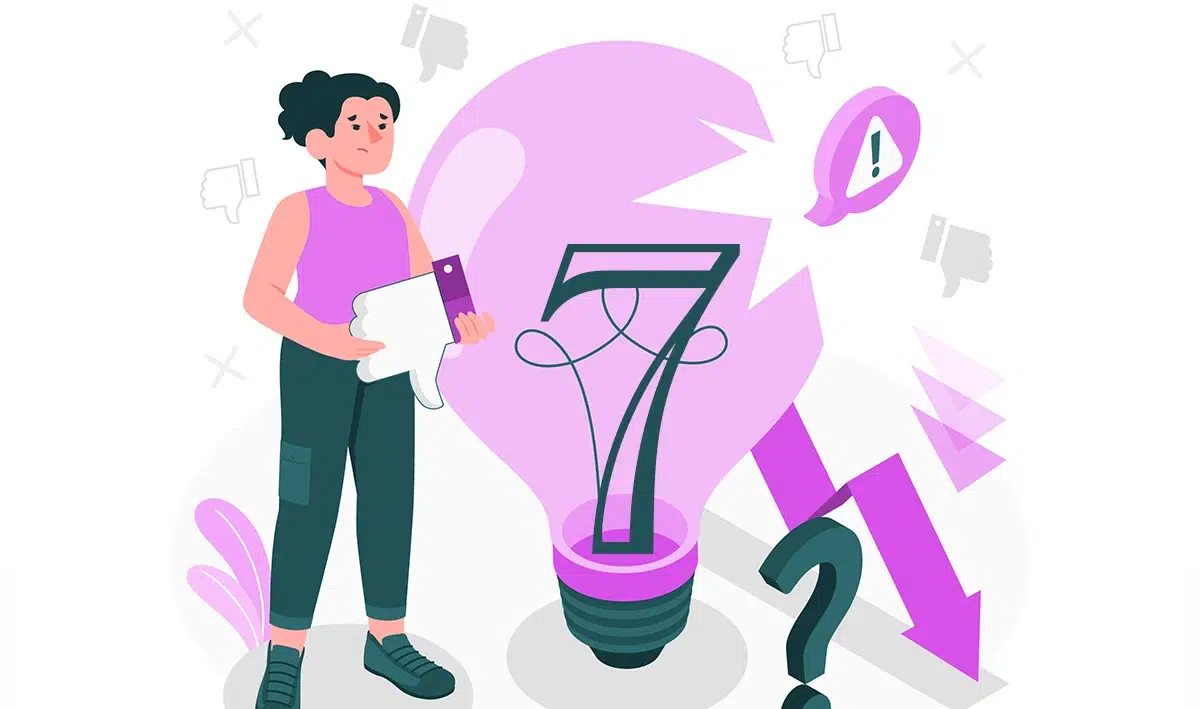
Common logo design mistakes to steer clear of:
1. 🙅♀️ Skipping strategy
- No research into target audience and brand values.
2. 🙅♀️ Cluttered composition
- Trying to cram in too many elements and details.
3. 🙅♀️ Choosing overused motifs
- Generic shapes like globes and lightbulbs.
4. 🙅♀️ Copying competitors
- Lacking originality.
5. 🙅♀️ Choosing overly intricate fonts
- Hard to read at small sizes.
6. 🙅♀️ Being too abstract
- Forgetting the logo meaning altogether.
7. 🙅♀️ Not future-proofing
- Designing for current fads rather than longevity.
Great logos derive from intentional design, not haphazard graphics. Take time to strategize, simplify, and develop an original concept aligned to your branding goals.
Key Questions to Ask Yourself When Designing a Logo
As you design your logo, continuously revisit these critical questions:
What one thing do I want my logo to communicate?
Will the audience understand the meaning behind this symbol, font, shape?
Does this reflect my brand personality and speak to my target audience?
Is the logo simple and memorable or confusing at first glance?
Does each element serve a purpose or enhance the logo design?
Is this too similar to a competitor or overused concept?
How does the logo translate to black and white and different sizes?
Will this logo design stand the test of time and shifting fads?
Does this expand on cliches or breathe originality into my brand identity?
Evaluating these aspects throughout the design process will keep you on track to an impactful logo that becomes an iconic brand asset.
Why Invest in a Professional Logo Design
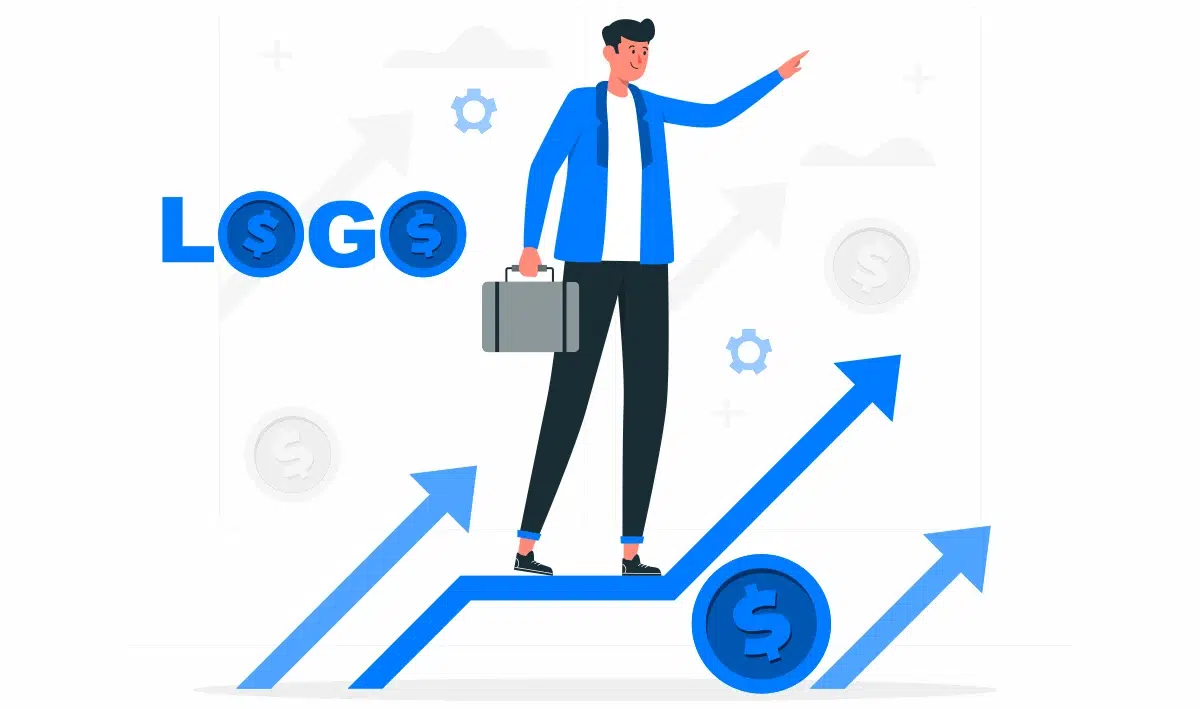
Because your logo is essentially the face of your brand, it's worth investing in professional design rather than a DIY template. Here's why:
You only launch a new logo once - First impressions count. Presenting a professionally crafted logo builds credibility from day one.
Logos last for decades - You want to get it right the first time. Think long-term.
Top designers understand brand strategy - They'll help express what makes your brand unique.
Expertise saves you time and stress - Avoid sifting through weak concepts and revisions.
A strong visual identity attracts customers - It makes an emotional connection that DIY can’t.
It pays dividends over time - The lifetime value of a high quality logo is well worth the upfront investment.
In our visually-driven world, your logo is your most valuable marketing asset. Hiring an expert to create an iconic logo that resonates with your audience is one of the wisest brand investments you can make.
Logo Design Trends to Avoid
Certain logo trends come and go. Here are a few current trends designers recommend avoiding:
Outlined glow effects
Glowing outlines may seem cool at first but the trend could fade quickly. Keep effects timeless like subtle shadows/depth.
Unbalanced visual weight
All elements should be balanced visually. Avoid heaviness in some areas and not others. White space is key.
Weak negative space usage
Cluttered logos leave no room for negative space to let key elements breathe. Leave strategic gaps.
Hard-to-reproduce intricacy
If a logo is so complicated it can't be printed or etched clearly, then it's too intricate. Simplify components.
Anything requiring explanation
Logos should be self-explanatory. If you have to explain a shape or color, go back to the drawing board.
By learning which trends to reject for longevity, you give your logo the best chance of becoming a recognizable, iconic brand symbol for decades to come.
Choosing the Right Logo Design for Long-Term Success
In an era where visual branding plays a pivotal role, committing to a strong logo design lays the foundation for your brand identity. But with so many options for logos, from DIY templates to crowdsourced design contests to professional agencies, it can be daunting to determine which direction is right for your company.
By understanding the key factors like customization level, human vs. AI design, cost, timeline, quality control, and brand strategy, you can weigh each element according to your budget and needs. DIY logo makers provide an affordable starting point but lack strategic value and customization. Professional designers offer a more thoughtful, tailored process yet require greater investment.
Ultimately, the visual mark that conveys your brand essence in an instant can make an emotional connection with customers for decades to come – making it worth the search for finding the right logo design partner. Do your due diligence, ask the right questions, and don't settle for less than a logo that encapsulates your vision. Your brand identity and connection with your audience depends on it.
- Previous ArticleLogo Wear
- Next ArticleThe Evolution and Impact of Pepsi Logo Design Over the Years
